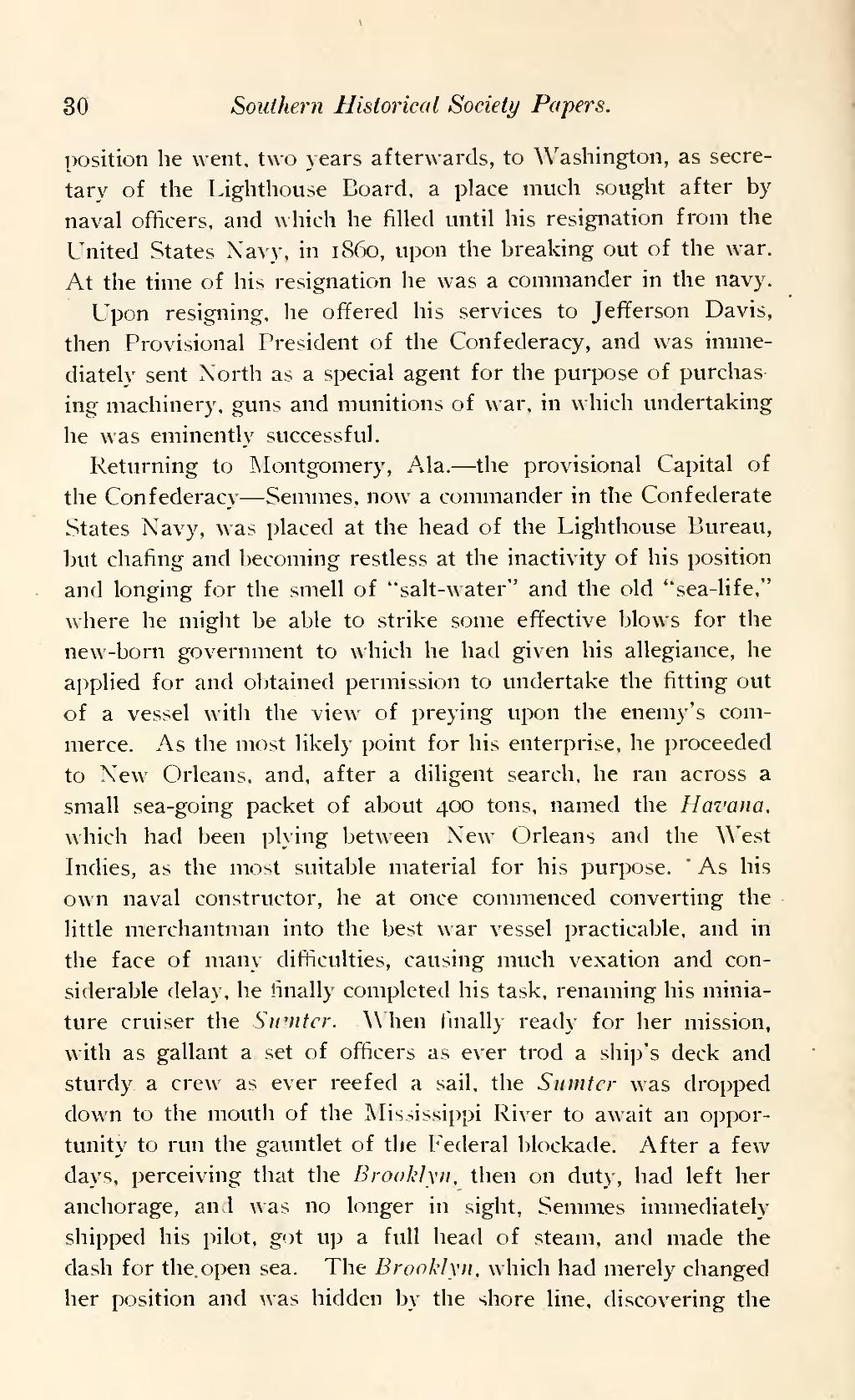position he went, two years afterwards, to Washington, as secretary of the Lighthouse Board, a place much sought after by naval officers, and which he filled until his resignation from the United States Navy, in 1860, upon the breaking out of the war. At the time of his resignation he was a commander in the navy.
Upon resigning, he offered his services to Jefferson Davis, then Provisional President of the Confederacy, and was immediately sent North as a special agent for the purpose of purchasing machinery, guns and munitions of war, in which undertaking he was eminently successful.
Returning to Montgomery, Ala.—the provisional Capital of the Confederacy—Semmes, now a commander in the Confederate States Navy, was placed at the head of the Lighthouse Bureau, but chafing and becoming restless at the inactivity of his position and longing for the smell of "salt-water" and the old "sea-life," where he might be able to strike some effective blows for the new-born government to which he had given his allegiance, he applied for and obtained permission to undertake the fitting out of a vessel with the view of preying upon the enemy's commerce. As the most likely point for his enterprise, he proceeded to New Orleans, and, after a diligent search, he ran across a small sea-going packet of about 400 tons, named the Havana, which had been plying between New Orleans and the West Indies, as the most suitable material for his purpose. As his own naval constructor, he at once commenced converting the little merchantman into the best war vessel practicable, and in the face of many difficulties, causing much vexation and considerable delay, he finally completed his task, renaming his miniature cruiser the Sumter. When finally ready for her mission, with as gallant a set of officers as ever trod a ship's deck and sturdy a crew as ever reefed a sail, the Sumter was dropped down to the mouth of the Mississippi River to await an opportunity to run the gauntlet of the Federal blockade. After a few days, perceiving that the Brooklyn, then on duty, had left her anchorage, and was no longer in sight, Semmes immediately shipped his pilot, got up a full head of steam, and made the clash for the. open sea. The Brooklyn, which had merely changed her position and was hidden by the shore line, discovering the
